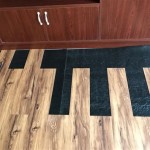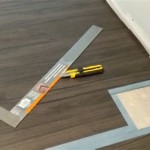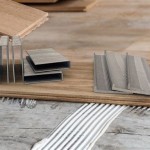Can You Use Thin Brick On The Floor Of A House?
Thin brick, as the name suggests, is a thinner version of traditional brick, typically ranging in thickness from ¼ inch to ¾ inch. This material has gained popularity in recent years for its aesthetic appeal, offering the look and feel of real brick without the weight and cost associated with full-sized bricks. Consequently, many homeowners and designers are exploring its applications beyond walls, including its viability as a flooring material. The question of whether thin brick can be used on the floor of a house requires a careful examination of its properties, advantages, disadvantages, and installation considerations.
Understanding the composition and manufacturing process of thin brick is crucial in assessing its suitability for flooring. Thin brick is generally manufactured from clay, shale, and other natural materials, which are then fired at high temperatures. This process results in a durable, albeit thinner, product. The manufacturing process often involves a slicing or molding technique to achieve the desired thin profile. The resultant material is lighter than traditional brick, making it easier to handle and install, but it's essential to consider its inherent strength and resistance to wear and tear when considering its use as a flooring option.
Using thin brick as flooring presents both compelling advantages and potential drawbacks. The decision to utilize thin brick for flooring hinges on a thorough understanding of these factors and careful planning during the installation process. Several factors influence the success and longevity of thin brick flooring, including the subfloor preparation, the choice of adhesive, and the grouting method.
Aesthetic and Design Flexibility
One of the primary advantages of using thin brick on the floor is its aesthetic appeal. It offers the classic, rustic charm of brick, providing a warm and inviting atmosphere to any room. Thin brick is available in a variety of colors, textures, and sizes, allowing for a wide range of design possibilities. From traditional red brick to more contemporary grey or white options, thin brick can complement various architectural styles and interior design themes. Its versatility extends beyond color, offering different surface textures, such as smooth, wire-cut, or tumbled finishes, further enhancing its design flexibility.
Thin brick can also be arranged in various patterns, such as herringbone, running bond, or basketweave, to create unique and visually appealing floor designs. This flexibility allows homeowners to personalize their flooring and achieve a distinctive look that sets their space apart. Furthermore, thin brick can be used to create accent borders or inlays, adding visual interest and defining specific areas within a room. Combined with different grout colors, the design possibilities are virtually endless.
The authentic, aged look of brick is often sought after, and thin brick can effectively mimic this aesthetic. Many manufacturers offer thin brick options that are designed to replicate the appearance of reclaimed or antique brick, complete with imperfections and variations in color. This can add character and history to a space, creating a sense of timelessness and charm. The use of thin brick flooring can therefore be a valuable design tool for achieving a specific aesthetic goal.
Durability and Maintenance Considerations
While thin brick offers significant aesthetic advantages, its durability and maintenance requirements are critical considerations when evaluating its suitability for flooring. Unlike full-sized brick, thin brick's reduced thickness may make it more susceptible to cracking or chipping under heavy loads or impact. However, the overall durability of thin brick flooring is also dependent on proper installation and the quality of the materials used.
The subfloor must be properly prepared to ensure a stable and level surface. Any imperfections or unevenness in the subfloor can lead to stress on the thin brick and increase the risk of cracking. It is recommended to use a high-quality mortar or adhesive specifically designed for thin brick installation. This will ensure a strong bond between the thin brick and the subfloor, providing added support and stability. The choice of grout is also important. Epoxy grout is generally more durable and stain-resistant than cementitious grout, making it a better option for high-traffic areas or areas prone to moisture.
Regular maintenance is essential to prolong the life of thin brick flooring. This includes sweeping or vacuuming regularly to remove dirt and debris, as well as occasional cleaning with a mild detergent and water. Avoid using harsh chemicals or abrasive cleaners, as these can damage the surface of the thin brick or grout. Sealing the thin brick and grout can also help to protect them from stains and moisture penetration. The frequency of sealing will depend on the type of sealant used and the level of traffic in the area.
It's worth noting that the durability of thin brick flooring can vary depending on the specific product and manufacturer. Some thin brick products are specifically designed for flooring applications and may be more durable than others. It is important to research different options and choose a product that is appropriate for the intended use. If the flooring is expected to withstand heavy foot traffic, consider selecting a thicker thin brick product or one with a higher abrasion resistance rating.
Installation Process and Associated Costs
The correct installation process is paramount to the success of any flooring project, and this is especially true for thin brick. Improper installation can lead to a variety of problems, including cracking, loose bricks, and water damage. The installation of thin brick flooring involves several steps, including subfloor preparation, layout planning, brick placement, grouting, and sealing.
Subfloor preparation is perhaps the most critical step. The subfloor must be clean, level, and structurally sound. Any cracks or imperfections in the subfloor should be repaired before proceeding with the installation. A self-leveling compound may be necessary to create a perfectly smooth surface. Once the subfloor is prepared, it is important to plan the layout of the thin brick. This involves determining the desired pattern and ensuring that the bricks are aligned properly.
The thin brick is then adhered to the subfloor using a thin-set mortar or adhesive. It is important to use a notched trowel to create even ridges in the mortar, which will help to ensure a strong bond. The bricks should be placed carefully and pressed firmly into the mortar. Spacers can be used to maintain consistent grout lines. After the mortar has cured, the grout is applied to fill the spaces between the bricks. The grout should be worked into the joints using a grout float, and any excess grout should be wiped away with a damp sponge.
Finally, the thin brick and grout should be sealed to protect them from stains and moisture. The cost of installing thin brick flooring can vary depending on several factors, including the size of the area, the type of thin brick, the complexity of the installation, and the labor costs. It is generally more expensive to install than some other flooring options, such as vinyl or carpet. However, the long-term cost may be offset by the durability and longevity of thin brick flooring. While a DIY installation is possible, professional installation is recommended to ensure a high-quality result and avoid potential problems.
In summary, thin brick can be used on the floor of a house, offering a visually appealing and durable flooring option. Its success depends on careful consideration of design flexibility, durability maintenance, and proper installation processes. The unique aesthetic appeal and design options of thin brick flooring make it a viable choice for homeowners seeking to add character and warmth. However, prospective users must carefully assess the associated costs, maintenance requirements, and installation complexities before making a final decision. Choosing appropriate products, implementing professional installation techniques, and establishing a consistent maintenance schedule are all key to ensuring the long-term success of thin brick flooring in residential settings.

How To Use Thin Brick For Flooring Installation North Georgia

New House Brick Floors Of Hargrove

Diy Reclaimed Brick Floor Laundry Room Reno

New House Brick Floors Of Hargrove

How To Use Thin Brick For Flooring Installation North Georgia

Diy Vintage Brick Floor Makeover On A Budget Dream Home Reno Ep 11

How To Use Thin Brick For Flooring Installation North Georgia

How To Install Herringbone Brick Floor Tile Jenna Sue Design

New House Brick Floors Of Hargrove

Thin Brick Veneer By Portstone
Related Posts








